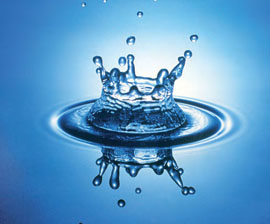by SAILORS FOR THE SEA
Here at Sailors for the Sea, we’ve been getting a lot of calls and emails lately asking, “how can I use fewer bottles?” It may be partially due to our recent push to get boaters and boating events to reduce their use of plastic by setting up water refill stations and owning refillable bottles themselves, and we’re happy to see that it’s catching on!
It’s one thing to decide you want to take that step and reduce your impact, but another all together to figure out how to do it. What kind of a problem are we looking at anyway?
It is estimated that, in the U.S. alone, we use between 30 and 50 billion disposable plastic water bottles every year. Of those, only about 12% get recycled. As we know from some earlier Ocean Watch Essays, plastic can have a devastating effect on marine life, wildlife and human life. Already, over a million seabirds, one thousand marine mammals, and innumerable fish die in the North Pacific each year due to swallowing our trash or drowning in it. Scientists have linked human obesity, infertility and depression with the entry of these pollutants into the food chain.
Considering that the commercialization of single-serving bottled water only really came to prominence in the 1980s, it begs the question: What did we all do before that? What did we do before we were assured of the convenience and ability to buy a bottle of water on the go any time we get a little bit thirsty or dehydrated? It takes a little imagination, but there are answers aplenty. We asked some of our staff and friends for their thoughts on the following scenario:
“You’re away from home and, getting thirsty, realize you’ve forgotten to pack your reusable stainless steel water bottle. What do you do?”
Program Manager Chris says: “I’m a little old-fashioned, so I’d cup my hands (the original reusable container) under the nearest tap. I prefer Starbucks sinks, personally. After all, in most cases, it’s the same water there that comes in the bottles!”
Sailors for the Sea board member Betsy Nicholson says: “I’d buy another reusable bottle as a souvenir knowing it’s good to have them in different places so you don’t forget it again – and fill it up with tap water, which we know is regulated at higher standards than the bottled water you can buy in a disposable bottle.”
Office Administrator Hilary Wiech says: “Find a water fountain. The water is always cold and free!”
PR Consultant Lauren Curley says: “I would rinse out one of the ‘always to be found’ coffee cups (paper of course) you can find in my car and use that for drinking water!”
Salty Dog, Tiller, says, “Bark. I’m a dog. I will literally drink water off of the ground. What? You’re too good for that puddle? Woof.”
It is easy to see how we have become reliant on bottled water. It is clean, convenient, relatively inexpensive and can be found nearly everywhere. In fact, it has all of those things in common with tap water, except for the price. Tap water is free.
If you are one of the relatively few individuals who never leave home without your own stash of H2O, then you probably don’t need our advice. If you’re like us, however, and often find yourself out in the world without a bottle, bag to carry it in, or simply didn’t feel like lugging liquid around all day, all is not lost! Resources and options abound for us to stay hydrated, keep our cash in our wallets, and keep plastic out of the landfills and out of the oceans.
What Can You Do?
• Carry a stainless steel bottle full of water to refill as needed. Go with stainless steel instead of plastic or aluminum.
• If you need a bottle, consider Isabella Water. Half the cost of every bottle sold goes toward building wells for communities without access to fresh drinking water.
• Find a fountain for quick access to free, fresh water.
• If you worry about water quality, consider a bottle with a built-in filter. Camelbak and Bobble Water both make bottles with filters.
• Let people know about free, public water near you.
• Tell us how you hydrate out in the world by emailing us at info@sailorsforthesea.org.
• Read our previous essays on plastic pollution by Sailors for the Sea, Roz Savage and the Sea Education Association.
• If you need water for a sporting event, check out our water bottle reduction resource and Zip 2 Water, a portable filtration system.
• Become a member of Sailors for the Sea. ✦
Editor’s note: This article originally appeared on Sailors for the Sea’s blog and is reprinted with permission. To learn more about Sailors for the Sea, visit sailorsforthesea.org.




